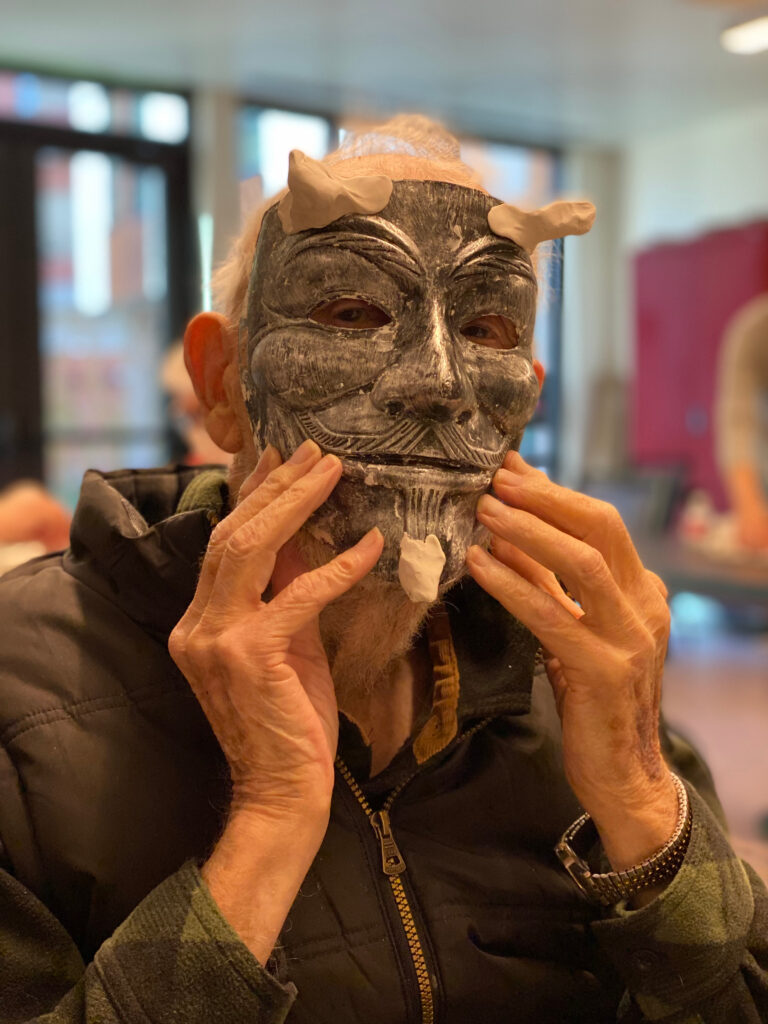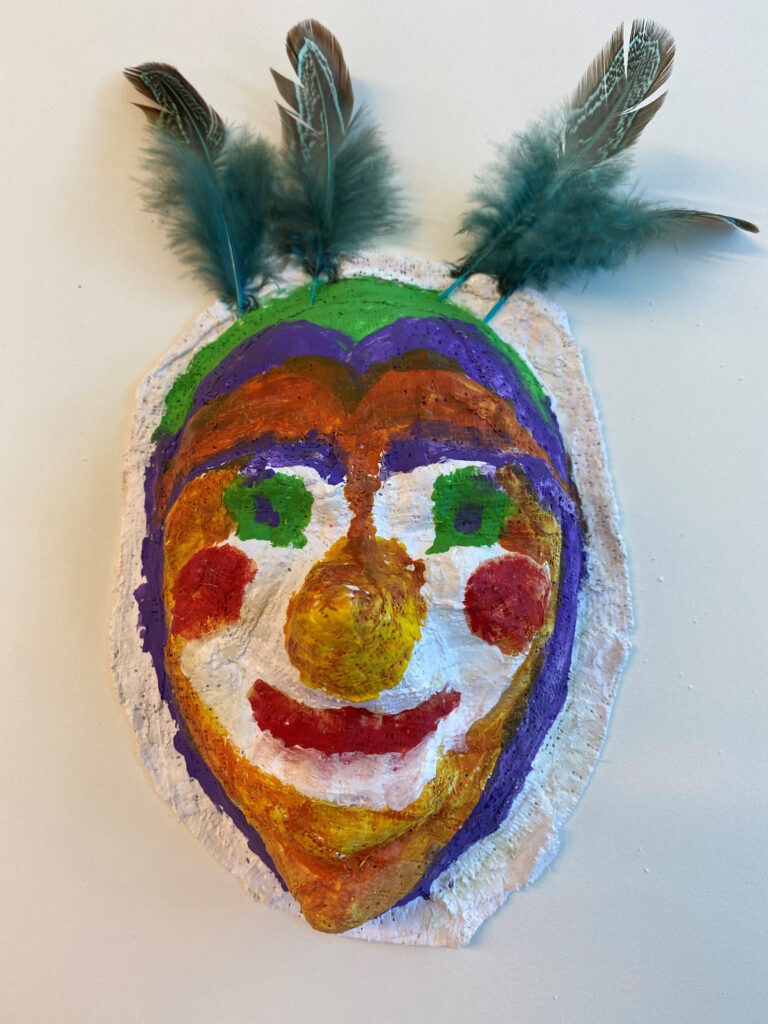Purim is a joyous holiday celebrating the saving of the Jews from a threatened massacre at the hands of an evil Persian vizier, Haman. The story of Purim is told in the Book of Esther, whose eponymous heroine plays the leading role in saving her people. The holiday is traditionally celebrated with wild abandon and with the giving of gifts to friends and to the poor. Purim is often called the Jewish carnival, and dressing in costume and taking part in raucous festivities heighten the levity of the day
Across our campus for the past few weeks, residents have been preparing to celebrate Purim by making masks.

Purim means ‘lots,’ as in gambling. The story goes like this: The King summoned his wife Vashti to dance in front of him and his men friends. She said no. He banished her. He went looking for a new Queen. He came upon Esther, a Jew. He married her. Soon, she discovered that her husband, the King, had an advisor, Haman, who was plotting, behind his back, to kill all the Jews. Esther went to her uncle, Mordechai, for advice. He helped her to devise a plan to inform the King and save the Jews. She succeeded. The King killed his advisor. Peace was restored. The story has become important because an entire people were saved from destruction by one woman’s bravery and the men around her believing what she said.
An intriguing fact: The Book of Esther is the only book of the Bible that does not mention G-d anywhere, and yet there it sits as part of the Bible itself!
In Hebrew, the name Esther means ‘hidden’. Unlike Passover or Hanukkah, Purim is a story of hidden miracles. That is why one of our Purim traditions is a masquerade. The Hebrew verb used to describe putting on the clothes of some character has the meaning of ‘looking for.’ Dressing up for the masquerade and wearing masks on Purim is an allusion to G-d hiding himself in the Purim story.


לַיְּהוּדִ֕ים הָֽיְתָ֥ה אוֹרָ֖ה וְשִׂמְחָ֑ה וְשָׂשֹׂ֖ן וִיקָֽר׃
The Jews enjoyed light and gladness, happiness and honor.
Esther 8:16
Residents making masks in the Eugene Friend and Julian Davis Art Studio in Byer Square.






Art classes are a longstanding tradition at SFCJL and are among the most popular activities with our residents. Donations are what make these and other programs possible.









